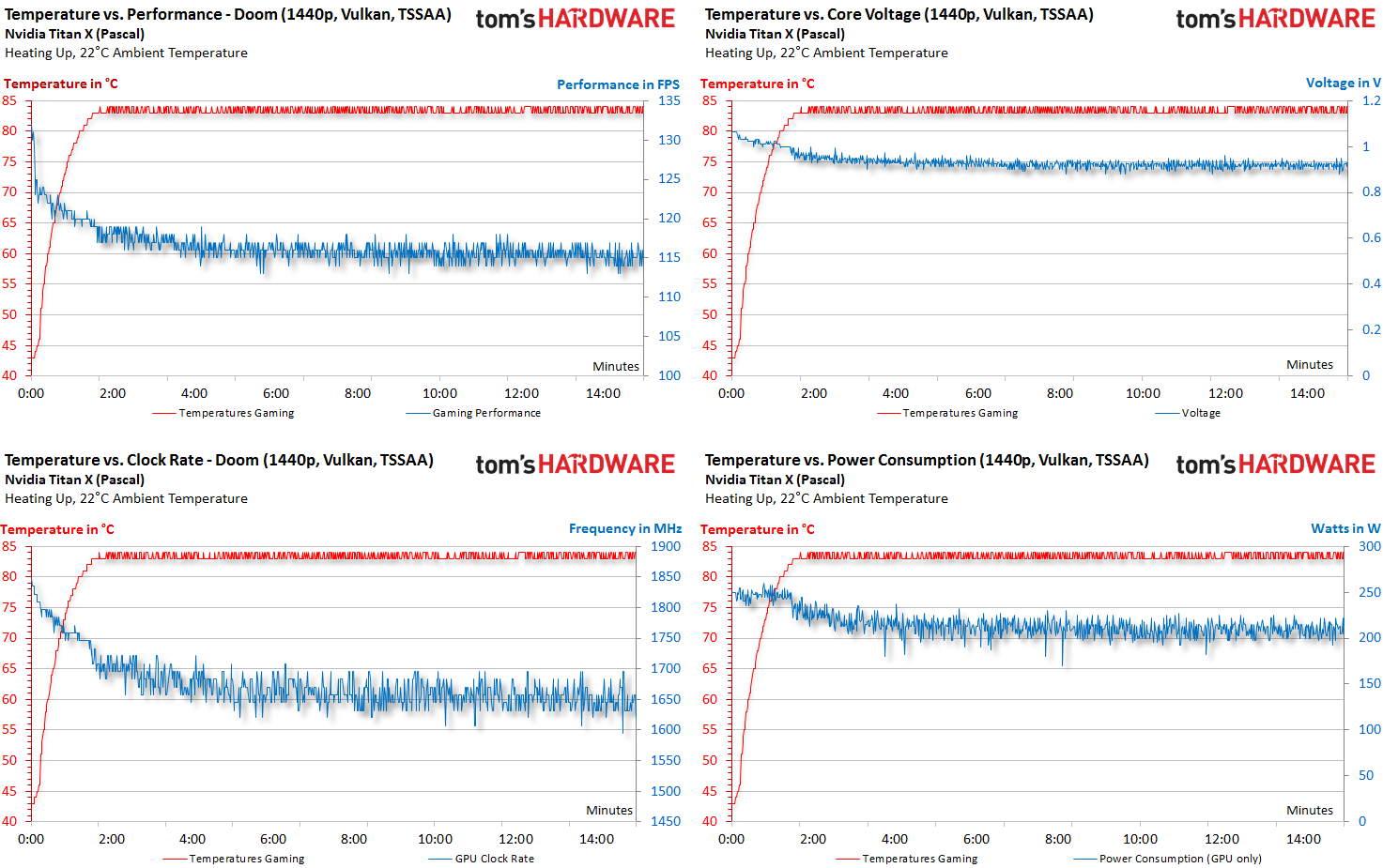PresentMon: Performance In DirectX, OpenGL, And Vulkan
Even More Data To Evaluate
FPS Vs. CPU Utilization
It can be difficult to identify bottlenecks or single-out the advantages/disadvantages of different APIs using a Fraps or PresentMon capture on its own. Adding the sensor data our software captures currently changes that, though.
First, let's consider the utilization of two CPUs, starting with the faster one. We can clearly see performance isn't being held back by any kind of host processing bottleneck.
The picture changes dramatically as we drop our cards into a lower-end platform. It's easy to see when and where graphics performance is limited by a CPU bottleneck. In addition, you can see how the load drops under DirectX 12 while using the Radeon RX 480, while the opposite appears true with Nvidia's GeForce GTX 1060.
FPS Vs. Power Consumption
A drop in CPU load is expressed partly by lower power consumption. We can scrutinize this more closely by testing DirectX 11 against DX 12 on our two systems, each with two graphics cards.
What we find is that the CPU's power consumption corresponds more or less to the CPU load.
This effect is also observable on the weaker CPU, though it's not quite as pronounced.
Attentive readers may have noticed that our recently-updated Nvidia Titan X Pascal 12GB Review featured improved charts, including temperature history. The data for this came from our new tool, replacing third-party software we were using previously.
Get Tom's Hardware's best news and in-depth reviews, straight to your inbox.
Conclusion
We have seen that pure bar graphs are well and good, but they're certainly not the last word when it comes to evaluating graphics performance. There's a ton of additional analysis that can go into reviewing video cards, and we're elbow-deep. The emphasis at this point is presenting the most valuable data, without overwhelming anyone, in a way that makes sense.
Our advantage as editors is that we always see the full data dump. So as it's sorted through, potential problem areas become clear and we can prioritize certain performance passages or sensor read-outs. Moving forward, we'll handle all of this on a case-by-case basis to ensure you get the information you need to guide your purchasing decision.
A special thanks to all of the readers who helped shape our direction. Whether it was emails, comment section posts, or group discussions on other forums, we listened every step of the way. This is actually where the idea for our stuttering index came from.
In the end, it's all a neat balancing act between information that enthusiasts can use and illustrations easier for the masses to digest. One thing's for sure, though: we're sure there's something here for everyone.
MORE: Best Deals
MORE: Hot Bargains @PurchDeals

Igor Wallossek wrote a wide variety of hardware articles for Tom's Hardware, with a strong focus on technical analysis and in-depth reviews. His contributions have spanned a broad spectrum of PC components, including GPUs, CPUs, workstations, and PC builds. His insightful articles provide readers with detailed knowledge to make informed decisions in the ever-evolving tech landscape




